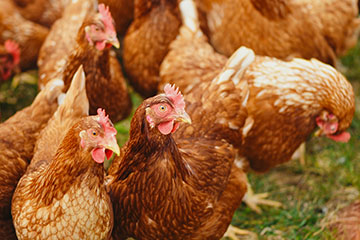Vaccine Virus Selection
2012-2013 Influenza Season
Each year, experts from Food and Drug Administration (FDA), World Health Organization (WHO), U.S. Centers for Disease Control and Prevention (CDC) and other institutions study virus samples collected from around the world. They identify the influenza viruses that are the most likely to cause illness during the upcoming flu season so that people can be protected against them through vaccination.
On February 23, 2012 the WHO recommended that the Northern Hemisphere's 2012-2013 seasonal influenza vaccine be made from the following three vaccine viruses:
- an A/California/7/2009 (H1N1)pdm09-like virus;
- an A/Victoria/361/2011 (H3N2)-like virus;
- a B/Wisconsin/1/2010-like virus (from the B/Yamagata lineage of viruses).
While the H1N1 virus used to make the 2012-2013 flu vaccine is the same virus that was included in the 2011-2012 vaccine, the recommended influenza H3N2 and B vaccine viruses are different from those in the 2011-2012 influenza vaccine for the Northern Hemisphere.
Who participates in vaccine virus selection for the flu vaccine used in the United States?
The WHO vaccine virus decision meetings include WHO representatives from the WHO Collaborating Centers, Essential Regulatory Laboratories, and others from the Global Influenza Surveillance and Response System (GISRS). After WHO makes its recommendations, the U.S. FDA Vaccines and Related Biological Products Advisory Committee (VRBPAC) meets to concur with or modify WHO's recommendation for the United States.
The WHO Vaccine Composition Meeting was held February 21-23, 2012 at the WHO headquarters in Geneva, Switzerland. A detailed report ![]() [408 KB, 16 pages] is available on the WHO web site.
[408 KB, 16 pages] is available on the WHO web site.
On February 28, 2012, the U.S. Food and Drug Administration’s (FDA) Vaccines and Related Biological Products Advisory Committee (VRBPAC) met to discuss the WHO recommendation. VRBPAC voted to adopt the same recommendation for the U.S. as WHO did for the Northern Hemisphere.
How are the viruses selected to make flu vaccine?
The influenza (flu) viruses selected for inclusion in the seasonal flu vaccines are updated each year based on information about which influenza viruses are being found, how they are spreading, and how well the previous season's vaccine viruses might protect against any that are being newly identified. Currently, more than 100 national influenza centers in more than 100 countries conduct year-round surveillance for influenza viruses and disease activity. These laboratories then send influenza viruses for additional analyses to the five WHO Collaborating Centers for Reference and Research on Influenza, which are located in the following places:
- Atlanta, Georgia, USA (Centers for Disease Control and Prevention, CDC);
- London, United Kingdom (National Institute for Medical Research);
- Melbourne, Australia (Victoria Infectious Diseases Reference Laboratory);
- Tokyo, Japan (National Institute for Infectious Diseases); and
- Beijing, China (National Institute for Viral Disease Control and Prevention).
Vaccine viruses are chosen to maximize the likelihood that the influenza vaccine will protect against the viruses most likely to spread and cause illness among people during the upcoming flu season. WHO recommends specific vaccine viruses for influenza vaccine production, but then individual countries make their own decisions for licensing of vaccines in their country. In the United States, the FDA determines what viruses will be used in U.S.-licensed vaccines.
Since the early 1980s, the seasonal flu vaccine has been trivalent (a three-component vaccine) with each component selected to protect against one of the three main groups of influenza viruses circulating in humans.
Source
Centers for Disease Control and Prevention
July, 2012
Related Topics
Influenza (Flu) Vaccine
-
2012-2013 Influenza (Flu) Season
-
2011-2012 Seasonal Influenza (Flu) Vaccine Safety
-
Vaccine Virus Selection 2012-2013 Influenza Season
-
Side Effects to the Seasonal Flu Vaccine
-
Intradermal Influenza (Flu) Vaccination
-
Fluzone High-Dose Seasonal Influenza Vaccine






